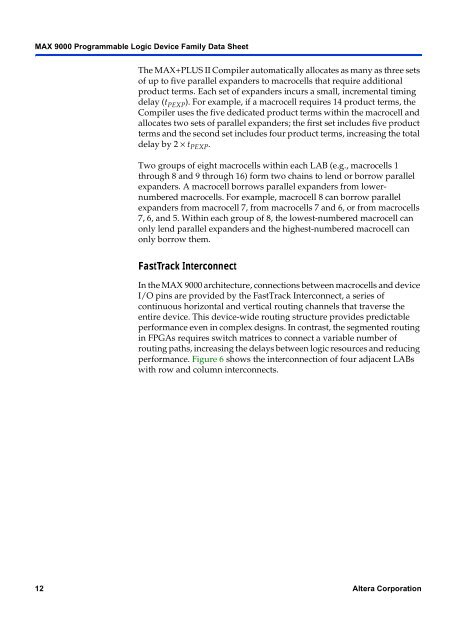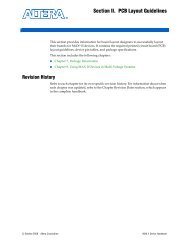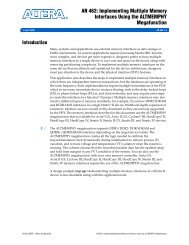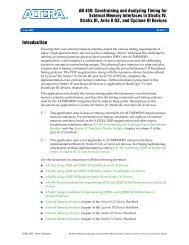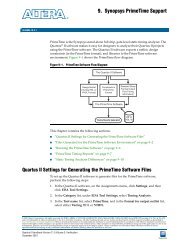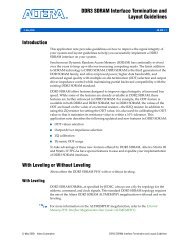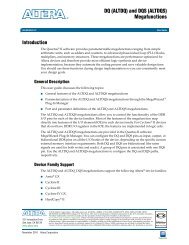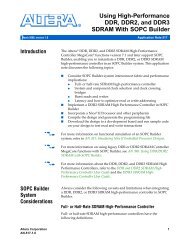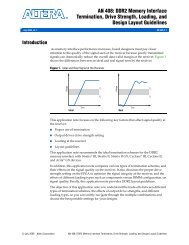MAX 9000 Programmable Logic Device Family Data Sheet
MAX 9000 Programmable Logic Device Family Data Sheet
MAX 9000 Programmable Logic Device Family Data Sheet
You also want an ePaper? Increase the reach of your titles
YUMPU automatically turns print PDFs into web optimized ePapers that Google loves.
<strong>MAX</strong> <strong>9000</strong> <strong>Programmable</strong> <strong>Logic</strong> <strong>Device</strong> <strong>Family</strong> <strong>Data</strong> <strong>Sheet</strong><br />
The <strong>MAX</strong>+PLUS II Compiler automatically allocates as many as three sets<br />
of up to five parallel expanders to macrocells that require additional<br />
product terms. Each set of expanders incurs a small, incremental timing<br />
delay (t PEXP ). For example, if a macrocell requires 14 product terms, the<br />
Compiler uses the five dedicated product terms within the macrocell and<br />
allocates two sets of parallel expanders; the first set includes five product<br />
terms and the second set includes four product terms, increasing the total<br />
delay by 2 × t PEXP.<br />
Two groups of eight macrocells within each LAB (e.g., macrocells 1<br />
through 8 and 9 through 16) form two chains to lend or borrow parallel<br />
expanders. A macrocell borrows parallel expanders from lowernumbered<br />
macrocells. For example, macrocell 8 can borrow parallel<br />
expanders from macrocell 7, from macrocells 7 and 6, or from macrocells<br />
7, 6, and 5. Within each group of 8, the lowest-numbered macrocell can<br />
only lend parallel expanders and the highest-numbered macrocell can<br />
only borrow them.<br />
FastTrack Interconnect<br />
In the <strong>MAX</strong> <strong>9000</strong> architecture, connections between macrocells and device<br />
I/O pins are provided by the FastTrack Interconnect, a series of<br />
continuous horizontal and vertical routing channels that traverse the<br />
entire device. This device-wide routing structure provides predictable<br />
performance even in complex designs. In contrast, the segmented routing<br />
in FPGAs requires switch matrices to connect a variable number of<br />
routing paths, increasing the delays between logic resources and reducing<br />
performance. Figure 6 shows the interconnection of four adjacent LABs<br />
with row and column interconnects.<br />
12 Altera Corporation


